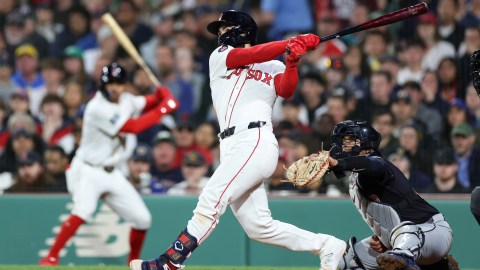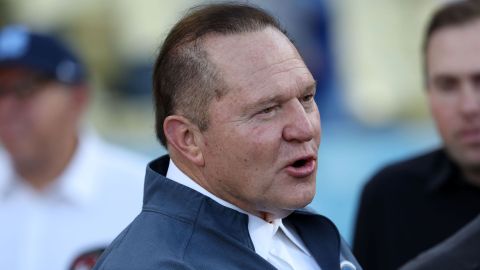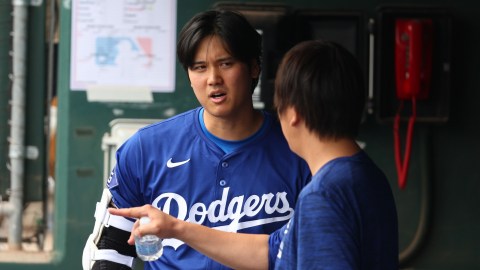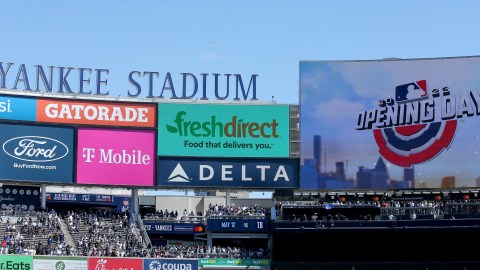 Jose Valverde is 35 years old. Players in their late 30s never get better naturally, so his decline will come — sooner rather than later.
Jose Valverde is 35 years old. Players in their late 30s never get better naturally, so his decline will come — sooner rather than later.
However, as we sit here a day after Valverde’s resurfacing with the Tigers and first save of the season, there’s nothing to suggest that his decline is imminent in 2013. Moreover, Valverde never deserved to lose the Tigers’ closer’s role in the first place, so the reunion between the two sides not only benefits both parties, but the breakup itself never should have occurred.
Back on Oct. 30, 2012, Tigers general manager Dave Dombrowski indicated to reporters that the team had no intention of bringing back Valverde. This came on the heels of the closer’s well-documented meltdown in the postseason, blowing consecutive saves in the ALDS and ALCS.
What Dombrowski exemplified was how far Valverde has fallen in Detroit, with the reliever essentially being looked at as a broken commodity. But while there’s no question that Valverde pitched very poorly during the playoffs, it begs other questions about how Dombrowski and the Tigers evaluate players.
In short, Valverde was coming off a season in which he converted 35 of 40 save opportunities, pitched almost 70 innings for the second consecutive seasons and was just a calendar year removed from finishing fifth in Cy Young voting. Given the dearth of relief pitching and dependable closers around baseball, why isn’t that a player you’d like to return for another season?
The usual mitigating stat that’s referenced on Valverde is his declining strikeout rate, which is worrying on the surface. After averaging about a strikeout an inning the previous three seasons, in 2012 Valverde’s ratio fell to .63 per inning — almost two fewer strikeouts per nine frames.
While that correlated with an ERA about a run-and-a-half higher than 2011, all of Valverde’s other peripherals say the ERA was a fluke. The likely culprit for Valverde’s ERA is an increase in home runs allowed, but that also looks like a statistical outlier.
While Valverde’s line-drive rate in 2012 was essentially identical to 2010 (around 18 percent, which is why his home run increase looks like a fluke), other peripherals improved. His walk rate fell from the previous two seasons by almost one free pass per nine innings, so while his strikeout rate fell, his strikeout-to-walk ratio only declined a tick.
Valverde’s fly ball ratio did increase in 2012, but it also fell in line with his peripherals prior to Detroit, when he was still a dependable closer. And, interestingly enough, in 2012 Valverde made no major changes in his approach — basically throwing the same pitches in the same situations about as often — so he hasn’t even begun to try to adjust his game plan as he’s aged. That bodes well going forward, as it gives him another tool to get hitters out.
Basically, Valverde’s park-adjusted ERA (ERA+) hasn’t fluctuated much since 2006. He’s just as effective as he’s always been, whatever the peripherals say.
To be fair to the counter-argument — and to show that Valverde is indeed aging — the most worrying number for the reliever, which is indicative of his declining strikeout rate, is Valverde’s falling swing-and-miss percentage. After hovering around 21 to 24 percent for most of his career, Valverde fell to 17 percent in 2010, rose to 19 percent in 2011 and fell to 12 percent in 2012.
However, that only indicates an aging pitcher. These types of peripherals by themselves don’t solely indicate success or failure, and Valverde has shown other ways — as mentioned earlier, his lower walk rate — of adjusting.
The point of all this hashing over SABR pet numbers is that, though Valverde has shown some signs of decline, he’s also showed signs of compensating and finding other ways to be effective. Basically, pitchers go through cold streaks and occasionally blow games, and the fact that Valverde fell out of favor in Detroit so hard and quick is only due to the reactionary nature of sports nowadays.
The Tigers went out on a limb with their closer and are now eating crow. The question is why, with all the indicators that Valverde should continue to be successful in the short-term, Detroit was so fast to burn its bridges with a pitcher the team now will depend on to win games.



